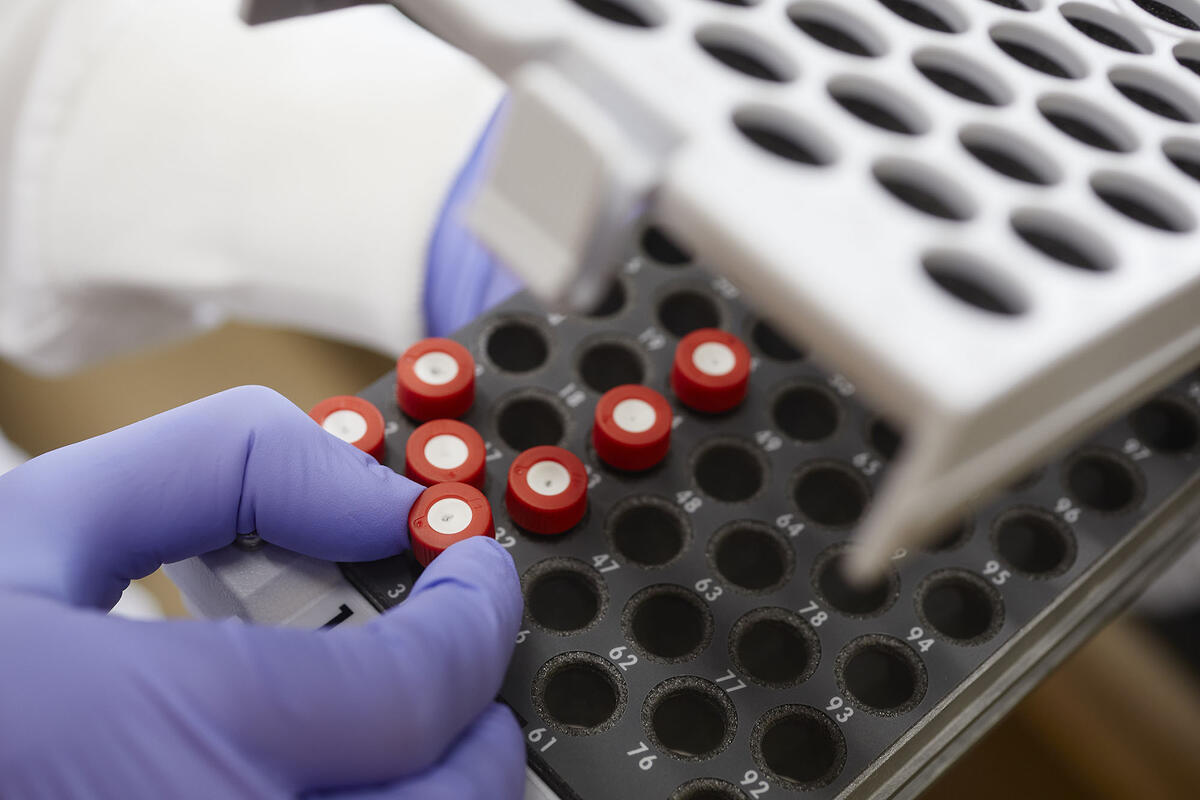Alzheimer's disease is a growing global public health challenge with more than 6 million Americans living with neurodegenerative disease right now and an growing population of individuals who may soon face cognitive disorders as they age.
Closer to home, the Alzheimer’s Association calculates that Nevada has the third-fastest growth rate for the disease. Between now and 2025, the number of Nevadans with dementia is expected to grow almost 31%, from 49,000 to 64,000.
UNLV’s department of brain health within the UNLV School of Integrated Health Sciences is addressing two critical areas: the need for improved Alzheimer’s detection and treatment and a need for more doctors and researchers who specialize in this area of neuroscience.
With June being Alzheimer’s & Brain Awareness Month, we interviewed Dr. Jeffrey L. Cummings, a leading expert on Alzheimer’s disease clinical trials and director of the Chambers-Grundy Center for Transformative Neuroscience at UNLV. He is also co-director along with neuroscience professor Jefferson Kinney, of the Pam Quirk Brain Health and Biomarker Laboratory, which recently was endowed by Ted and Maria Quirk in honor of Ted’s sister, Pam.
Here he explains how work at UNLV connects researchers around the globe in their quest to address brain health.
Can you tell us about the UNLV Chambers-Grundy Center for Transformative Neuroscience?
The principal activity in the UNLV Chambers-Grundy Center for Transformative Neuroscience is our clinical trials observatory, where we study the drug development pipeline for Alzheimer's disease treatment. New drugs are constantly coming into the pipeline, and those that fail are being eliminated from the pipeline. These observations allow us to understand the science of clinical trials and the science behind the new drugs and biomarkers being assessed in clinical trials.
Can you explain, in everyday terms, what biomarkers are?
A biomarker is a measure of a disease or a response to treatment. A typical example of a biomarker is the measurement of cholesterol in the blood. If cholesterol levels are high, treatment is initiated to prevent a heart attack or stroke.
We are in an exciting period of growth in the availability of biomarkers for Alzheimer's disease. One Alzheimer’s blood test is available, and others will likely be available soon. These blood tests for Alzheimer's disease are biomarkers.

Recently, an endowment established the Pam Quirk Brain Health and Biomarker Laboratory. What type of work will be done in that lab?
We are very grateful for the generosity of Ted and Maria Quirk in establishing the Pam Quirk Brain Health and Biomarker Laboratory. This endowment will allow us to expand significantly and accelerate our efforts in developing new biomarkers, provide a biobank resource for UNLV researchers, and measure known biomarkers critical to many types of research. The endowment helps us collaborate widely and acquaint the scientific world, Las Vegas, and those touched by Alzheimer's disease and other neurological disorders with the great science being done at UNLV.
How do you think the Pam Quirk Brain Health and Biomarker Lab work will help Nevadans with Alzheimer’s?
Alzheimer’s disease becomes increasingly common after the age of 60 and affects nearly half of individuals who reach the age of 80. Everyone knows someone who has been touched by Alzheimer’s disease. There are many causes of memory loss in older individuals, and biomarkers provide us with the means for accurate diagnosis of those who have Alzheimer’s.
Biomarkers are used to monitor therapy and may help us detect side effects of drugs before they become severe. Biomarkers are critical to success in clinical trials and the development of new treatments. There are many ways in which individuals in Nevada with Alzheimer's disease will be helped by our studies of biomarkers and brain health in the Pam Quirk Laboratory at UNLV.
How long has this type of biomarker research been going on at UNLV?
The serious analyses of biomarkers began in 2015. Dr. Kinney has long been interested in measuring the biological impact of Alzheimer's disease and other brain disorders. As a clinician, I was interested in biomarkers in clinical care and clinical trials. The 2015 grant from the National Institutes of Healthcares established the Center for Neurodegeneration and Translational Neuroscience, shared by UNLV and the Lou Ruvo Center, and provided new opportunities for collaborative studies of biomarkers.
How are students involved in the Pam Quirk biomarker lab?
We have had post-doctoral students from the School of Integrated Health Sciences and students from the School of Medicine participate in our research. The learning opportunities and engagement in the Pam Quirk lab provide students with hands-on experience, inform them about the research process, and afford them a chance to publish, which assists them in their applications for the next steps in their careers. Their experience makes them more competitive for future clinical and research positions.



